There are several types of dental floss brushes on the market. Some of them are waxed to get stuck in your teeth. Others are water flossers or compostable. The effectiveness of these interdental cleaners is still up for debate. But, no matter which you choose, you will notice a difference when compared to traditional dental floss. Here are some tips on choosing the right one for you. Read on to learn more about the options available.
Table of Contents
Interdental brushes
According to a review published in the Canadian Journal of Dental Hygiene, the use of interdental brushes significantly decreased plaque and subgingival inflammation. However, there is some controversy regarding the effectiveness of interdental brushes. This review focuses on consumer reviews, and not on clinical trials. It also does not provide medical advice or diagnosis. There are many benefits to using interdental brushes instead of dental floss. A comprehensive review of the literature on the topic is essential for making an informed decision.
The best way to know whether an interdental brush is the right choice for you is to talk to your dentist or hygienist. A dentist can prescribe the best interdental brush for your particular situation. Although some consumers report minor bleeding from using these brushes, it's important to use the proper size to avoid bleeding gums. Generally, interdental brushes last for about a week, but they should be replaced as soon as the bristles or wires become worn or distorted.
The most effective way to use an interdental brush is to gently push its bristles between your teeth. While this may seem complicated, it can actually be simple to do and can also be very effective. To get the most benefit, you should try using an interdental brush a couple of times per day before you brush your teeth. You should also try to use the brush before brushing your teeth with a soft-bristle toothbrush. To keep plaque at bay, you should use a mouthrinse daily.
The design of interdental brushes varies greatly, depending on the type and size of your teeth. Many brushes have a plastic handle. Some are longer, so you can reach back teeth. Some are even angled, which makes them easier to reach. The bristles are usually artificial fibres in varying hardness. Silicone brushes are also available, and some companies are trying to make these reusable. If you're looking for an alternative to dental floss, interdental brushes may be the answer.
Unlike dental floss, interdental brushes are used to clean between teeth. Because of this, it's crucial to purchase the right one for your mouth. Interdental brushes are available in several colours and sizes, and dentists have a tool for measuring the space between your teeth. This tool is very useful in cleaning between teeth, and will reduce the risk of periodontal disease. In addition, decreased plaque levels also contribute to long-term health, because less bacteria in the mouth means that there are fewer chances of systemic infections and complications.
Water flossers
A lot of people still don't floss on a regular basis. About 20% of adults never floss at all. However, there is a simple solution to this problem: using a water flosser. According to Dr. Brett Blacher, DDS, a practicing periodontist in Washington, D.C., a water flosser can help you clean around the brackets on your braces. Also, it can be convenient for elderly people who find it difficult to floss regularly.
Among the various types of water flossers, the Waterpik Sonic-Fusion 2.0 is the best-selling model. It combines the benefits of water flossing with brushing. Its three modes allow you to floss your teeth with ease. And with 16 ounces of water and a 5.5-ounce tank, the Waterpik Sonic-Fusion 2.0 can clean your mouth for up to 60 seconds. It also comes with a convenient travel case.
Water flossers are an excellent way to clean your teeth and prevent gum disease. However, if you have gum disease, you should wait until the bleeding stops before using water flossers. This is because they cannot help you with serious gum disease, but they are a good option for preventing gum inflammation. In addition to reducing gum inflammation, the water temperature of water flossers also helps to reduce sensitivity issues. In addition, they can be a great tool for those with difficult-to-clean teeth.
Despite the many benefits of water flossers, many people have trouble with flossing. For example, many people mistakenly put their floss between their teeth or fail to make a proper C-shape with dental floss. A water flosser is less technique-sensitive, making it harder to screw up. That is one reason why water flossers are so popular. However, if you're not sure if water flossers are right for you, talk to your dentist.
A water flosser may not be as effective as traditional dental floss, but they can certainly make the process more convenient. In fact, the Waterpik is the only water flosser with the ADA's seal of approval. This makes it the perfect choice for busy people who can't manage to floss by hand. However, unlike traditional string floss, using a water flosser can help you improve your oral health and reduce your risk of gum disease and tooth decay.
Compostable dental floss
If you're looking for a better alternative to plastic-based dental floss, consider switching to a compostable option. These natural alternatives are 100% plant-based and made from maize straw. The toothbrush itself is made from reusable glass flint, and you'll be donating to conservation organizations by using it. The plastic-free floss also contains no colored ink or gloss finish. If you're looking for a more sustainable alternative, you may consider purchasing vegan charcoal dental floss.
One brand that makes 100% compostable dental floss brushes is TreeBird. This floss is made from the vacated cocoons of silkworms. It's vegan, but isn't completely cruelty-free. TreeBird's floss comes in glass jars, and the refill bags are compostable, and even come with re-usable options. The company does not produce any animals, but their packaging is made of 100% post-consumer paperboard.
Traditional dental floss is made from petroleum-based plastic and nylon, which are extremely toxic to the environment. In fact, in the US, we use more than three million miles of dental floss each year! We throw away enough plastic bottles to fill a six-story football field. Plastic floss also chokes oceans and sea life. In addition to being bad for human health, plastic floss is a major contributor to climate change and other environmental issues.
Another option is to switch to silk dental floss, which is biodegradable and comes in a variety of flavors. Silk floss is biodegradable, while nylon is only used for interdental brushes and expandable dental floss. Its smooth texture is another great option. This type of floss is an excellent option for those interested in environmental sustainability. You can even buy a compostable dental floss brush. You can also choose from a range of other eco-friendly options.
If you use floss intermittently, it's best to try a few different brands before settling on one. Once you find the right thickness, you can give the rest away to friends. This brand of dental floss is made of natural silk and candelilla wax, and comes in a recyclable stainless steel container. You can buy three refills, or buy the five-pack. The cost is around $13 for three.
Effectiveness of interdental cleaners
One of the questions in the literature is the effectiveness of dental floss brushes in cleaning interdental spaces. The current study investigates this question. This study compared the efficacy of cylindrical and waist-shaped IDBs. Cylindrical brushes had lower cleaning efficacy and lower bacterial load compared to waist-shaped brushes. The results of the study suggest that waist-shaped IDBs are more effective in cleaning anterior teeth.
The study also examined the efficacy of two different shapes of IDBs for cleaning interdental spaces. Waist-shaped IDBs cleaned more surfaces than conically-shaped IDBs. They were more efficient in cleaning the line angle than cylindrical brushes. Both IDB shapes had higher cleaning efficacy, but the latter was more efficient at reaching the interdental spaces. The researchers also determined the effectiveness of the dental floss brush by calculating the posthoc power and determining the optimum size.
W-IDBs and C-IDBs are commonly used for dental floss brushing. They have the same bristle texture and width. However, the diameters of the two types of IDBs differed by 0.1 mg. These brushes were compared using intraoral images taken before and after their application. Colored plaque accumulation was measured in the line angle area of the pre-brushed and post-brushed images.
Traditional floss is not as effective as floss brushes for cleaning interdental areas. But if your gums are in good health, you can still use the traditional floss to clean interdental spaces. However, you should only use this type of floss in narrow gaps or places where the interdental brushes cannot fit. These are not as effective as interdental cleaners and are not as convenient. If you don't have the money to invest in a dental floss brush, then you can try the TePe brand. Its products come in several sizes.
In a cross-over study, a study was conducted to assess the effectiveness of an interdental brush over a dental floss brush. It measured the plaque covered surfaces in mm2. The authors used a custom-made software to estimate plaque coverage. The study was split-mouth, and the subjects used a waist-shaped interdental brush and a cylindrical one. The participants were randomly assigned to one group and the other side, and the study was repeated four days later. During the four-day follow-up period, the participants were asked to stop oral hygiene for four days.

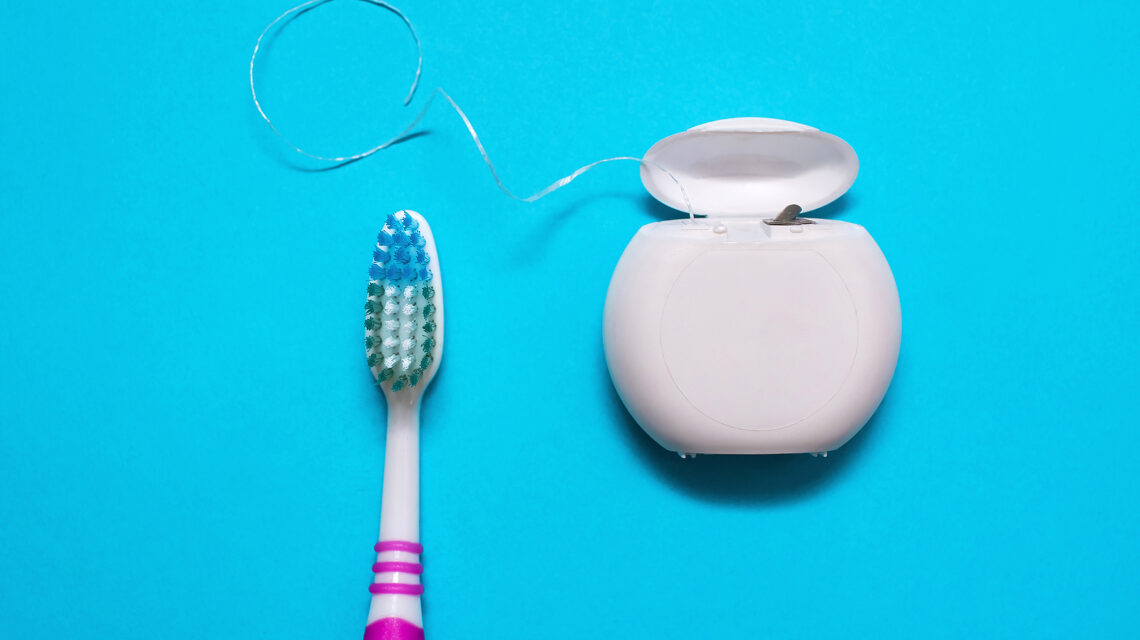

 The Diversity of Mouth Bacteria and the Role of Oral Hygiene
The Diversity of Mouth Bacteria and the Role of Oral Hygiene 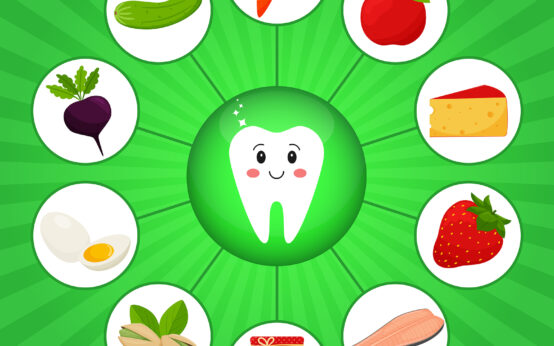 Healthy Teeth and Gums
Healthy Teeth and Gums 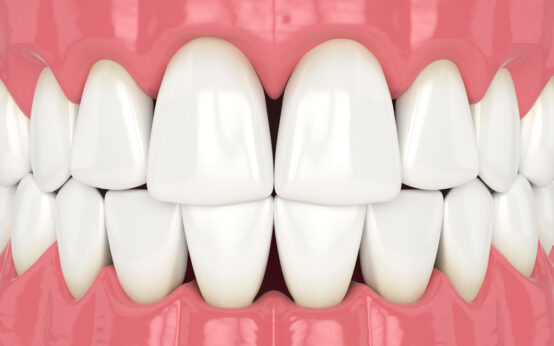 Which is the Best Way to Whiten Teeth at Home?
Which is the Best Way to Whiten Teeth at Home?  Three Approaches to Oral Brushing
Three Approaches to Oral Brushing 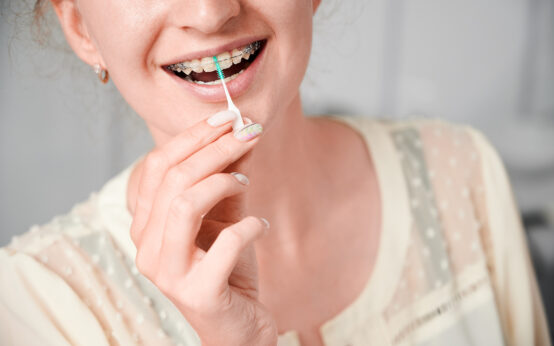 Brushing and Flossing With Braces
Brushing and Flossing With Braces 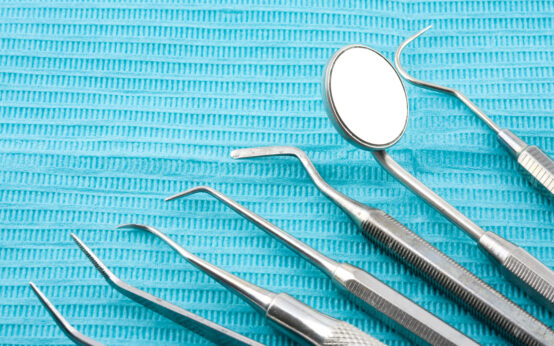 Dentists and Dental Instruments
Dentists and Dental Instruments